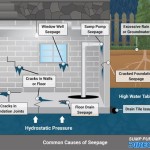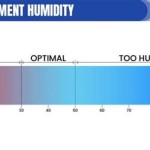Essential Aspects of Gaps Between Basement Walls and Floors
Gaps between basement walls and floors are common in older homes. While small gaps are not typically a problem, larger gaps can allow water, pests, and cold air to enter your basement. If you're concerned about gaps in your basement, there are a few things you can do to seal them.
Causes of Gaps Between Basement Walls and Floors
There are a number of factors that can cause gaps between basement walls and floors. These include:
- Settlement: As a house settles over time, the foundation can shift, causing gaps to develop between the walls and floors.
- Shrinkage: Wood floors and framing can shrink over time, which can also create gaps.
- Improper construction: Gaps can sometimes be caused by improper construction methods, such as not using enough sealant or not properly securing the walls to the floor.
Problems Caused by Gaps Between Basement Walls and Floors
Gaps between basement walls and floors can cause a number of problems, including:
- Water infiltration: Gaps can allow water to seep into your basement, which can lead to flooding and water damage.
- Pest infestation: Gaps can provide an entry point for pests, such as mice and insects.
- Cold air infiltration: Gaps can allow cold air to enter your basement, making it uncomfortable and increasing your energy bills.
How to Seal Gaps Between Basement Walls and Floors
There are a number of ways to seal gaps between basement walls and floors. The best method will depend on the size and location of the gaps.
For small gaps, you can use a caulk gun to apply a bead of caulk. For larger gaps, you may need to use a foam sealant or expanding foam.
To seal a gap using caulk, follow these steps:
- Clean the area around the gap with a damp cloth to remove any dirt or debris.
- Apply a bead of caulk to the gap using a caulk gun.
- Smooth out the caulk using a putty knife or your finger.
- Allow the caulk to dry completely before painting or applying any other finishes.
To seal a gap using expanding foam, follow these steps:
- Clean the area around the gap with a damp cloth to remove any dirt or debris.
- Shake the can of expanding foam vigorously.
- Apply a bead of expanding foam to the gap using the nozzle on the can.
- Allow the expanding foam to dry completely before trimming or painting.
Hiring a Professional
If you're not comfortable sealing the gaps yourself, you can hire a professional to do it for you. A professional will have the experience and expertise to properly seal the gaps and prevent water, pests, and cold air from entering your basement.

Foundation Repair Interior Signs Of Problems Gap Between Floor An Wall

Gap Between Basement Floor And Wall R Homeimprovement

Don T Seal The Gap Between Your Basement Floor Wall Everdry Toledo

Why You Can T Seal The Gap Between A Basement Floor And Wall

Sealing The Gap Between Your Garage Floor And Wall

Gap Between Foundation And Wall What Does It Mean Uretek

Gap Between Concrete Slab And Foundation Doityourself Com Community Forums

Don T Seal The Gap Between Your Basement Floor Wall Everdry Toledo

Ayers Basement Systems Waterproofing Photo Album Sentry Seal Saves A Frankfort Mi

What Does A Gap Between Your Wall And Floor Mean Foundation Professionals Of Florida
See Also








